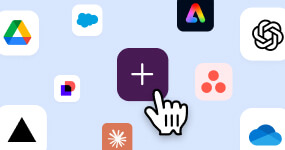March of last year—a lifetime ago in a different world—was the hardest month of my working life. As chief marketing officer of Slack, I wasn’t just grappling with the sudden, seismic shift in the way I was working; I was trying to lead a team through the sting of reshaping almost every aspect of our jobs and lives.

The first two months were an exhausting sprint: We were cranking on content and iterating everything at breakneck speed. But most important to our learning journey was supporting our customers on their learning journey. Our remote-work landing page became a resource hub. We provided one-on-one consultations with any customer to help with any questions they had about using Slack for remote work, and hundreds of Slack employees across the company (including in marketing) volunteered to lead consultations. We saw ourselves as more of a solutions partner than a software provider. And we were trying to figure all this out while taking care of each other and the people in our lives—like our customers were.
Focusing on solutions was the rallying cry for our company, and it further clarified the real challenges in our work and personal lives and the connection between them. This shift in how we lived and worked led us deeper into Slack, where we unearthed more solutions to the problem of distributed work. We created other solutions in Slack, like our new video, voice and screen recorder, which has led to fewer in-person, camera-on meetings and more information sharing when it works best. And lightweight, on-demand audio called Slack Huddles to re-create water-cooler conversation and encourage spontaneous brainstorming between two people or entire teams.
Slack has become essential for our own sanity and productivity and for bringing us closer together while we are physically farther apart. We’ve leveraged the seemingly simple tool of emoji to quickly convey meaning beyond words, and this has become so indispensable that it seems like we create more of them every day for more situations. And don’t get me started on social channels like #dad-jokes, where I often end up for a five-minute breather. Social channels are good for a few laughs, but they also help us share common interests, support common causes, and even compound the change we can make.
By increasing the flexibility in where and when we work, we also invented new ways to work. I regularly need to step away to take care of my kids, and using my Slack status to broadcast that fact not only helps my team understand when I’m available; it signals to other people with needs at home that they can take the time and space to do that. If you see two little-girl-face emoji and “11am-1pm” listed on my status, you know where I am and when you might expect to hear back from me.
“Social channels are good for a few laughs, but they also help us share common interests, support common causes, and even compound the change we can make.”
This flexibility also frees us up to think of how we work. Instead of scheduling a meeting with me from 11:30 to 12, what if the idea or question is posted in a channel for feedback with an @mention of me? Everything doesn’t require us to stare at the same screen at the same time reading the same slides. Working asynchronously opens the door for people who have at-home pressures on their time to be able to participate. It levels the playing field both for our international teams, who have been time-zone disadvantaged, and for people who don’t like speaking up in meetings but have amazing ideas if only they have the right way to express them.
This empathy and flexibility in how we work together and engage with one another inevitably began bleeding into our work externally. Our marketing approach hasn’t been to grab people but instead to meet them where they are, to think harder about individual circumstances, infuse humanity into our communication, and to put the best content out there so customers can “see” us. Our marketing philosophy has been to show, not tell: “Here’s who we are—and if it speaks to you, then let’s talk.”
Yes, the world of marketing is changing in so many respects; there are new channels, new ways to engage with audiences, new ways of hosting events. But because the lines have blurred between our lives and livelihoods, the most important change we need to make is to infuse humanity into all of our communications. We need to understand the evolving needs and full human condition of ourselves and, by extension, our customers.







